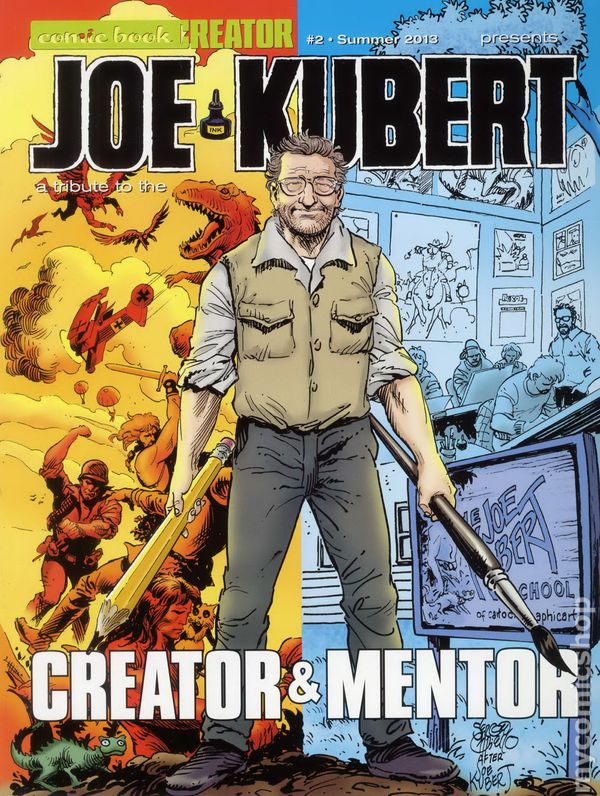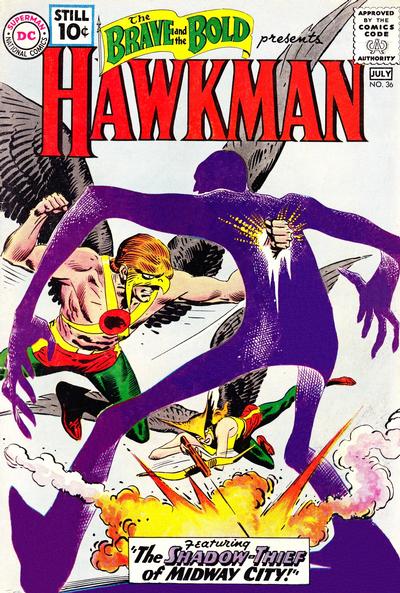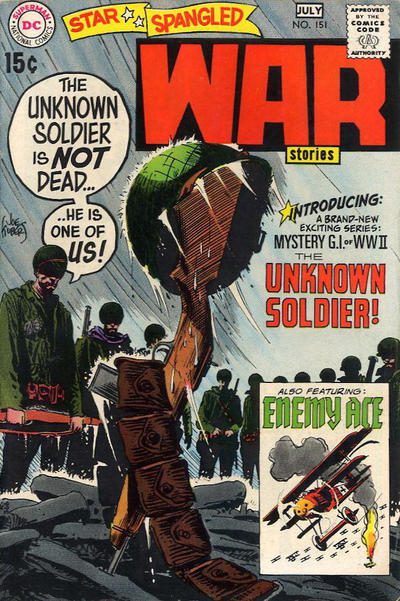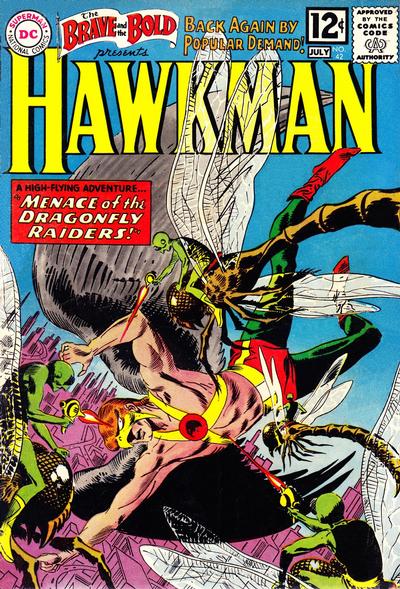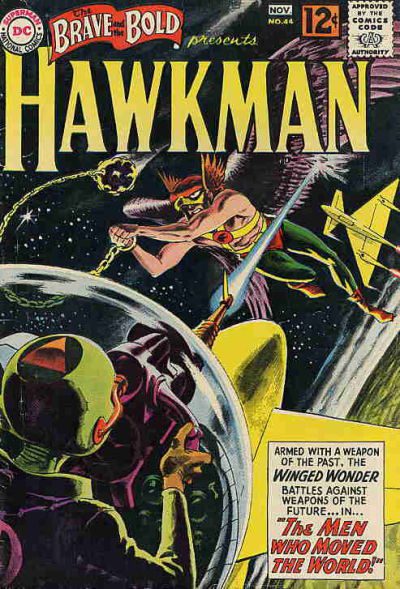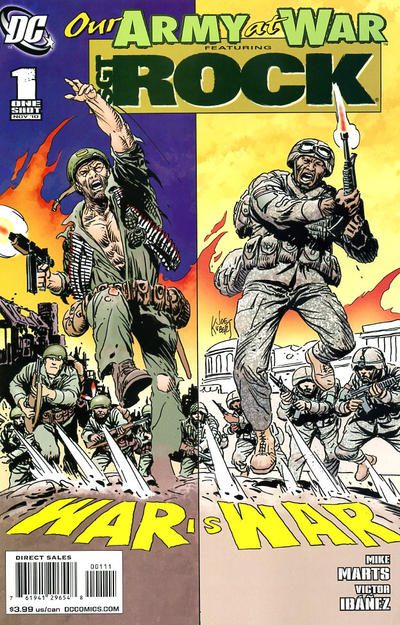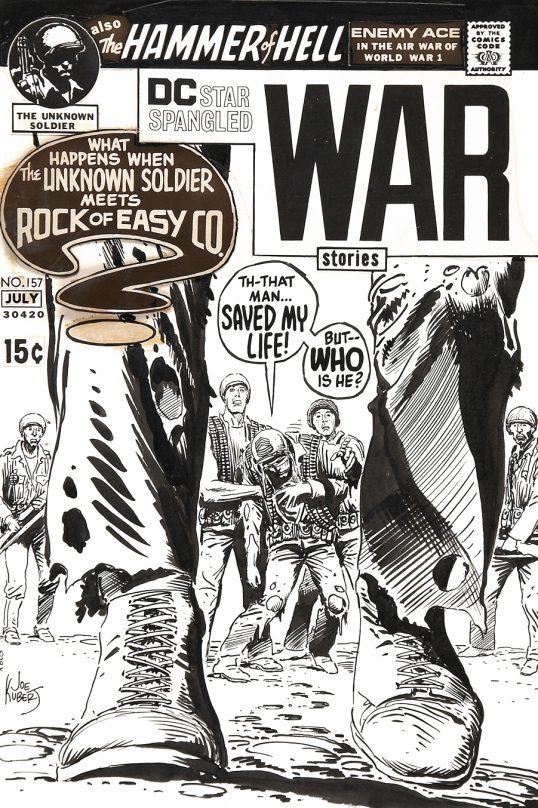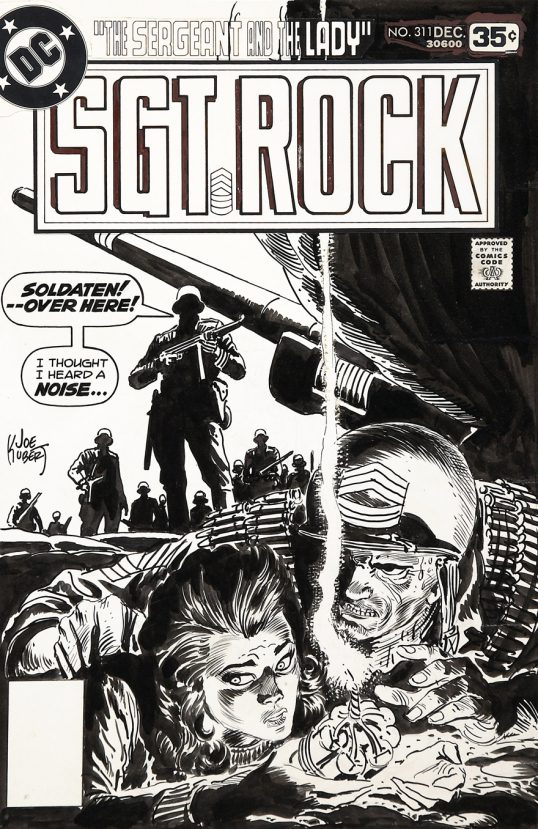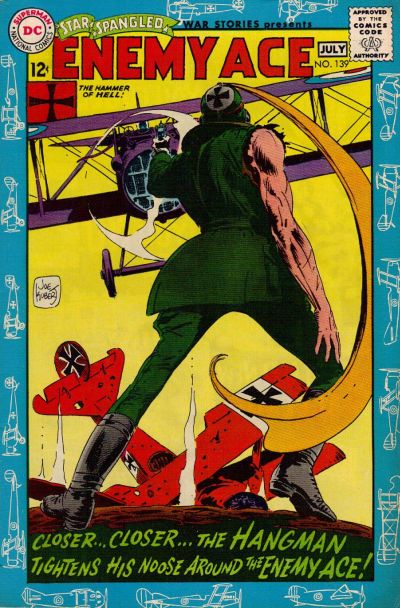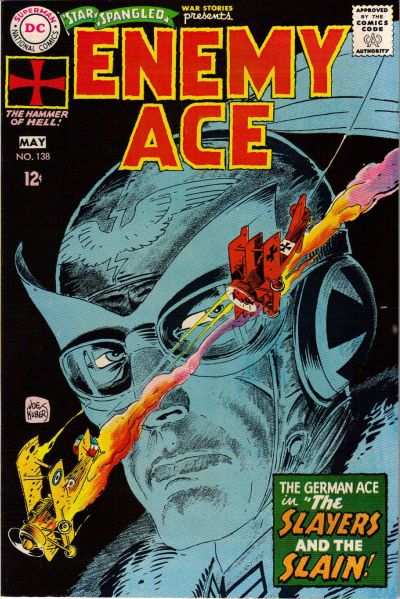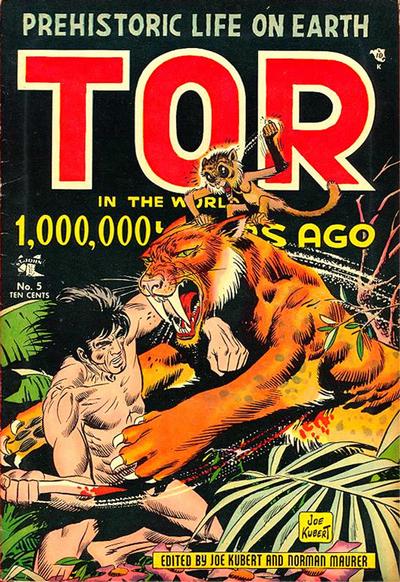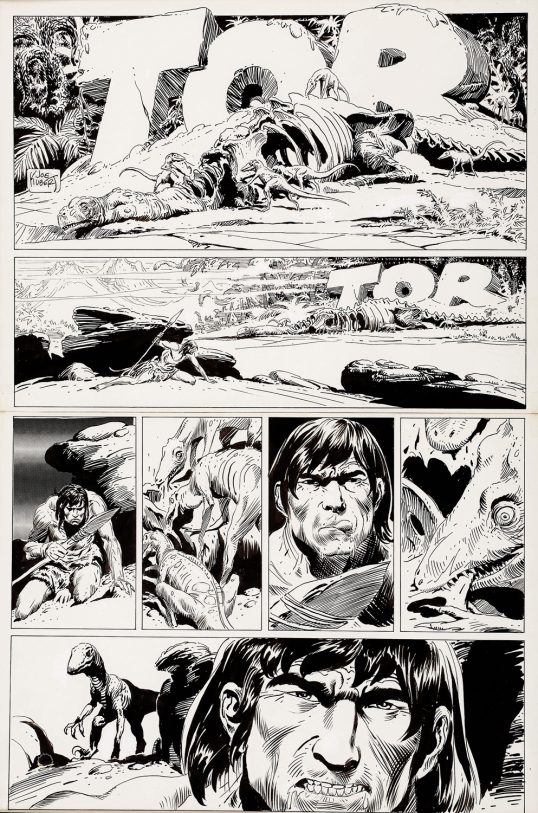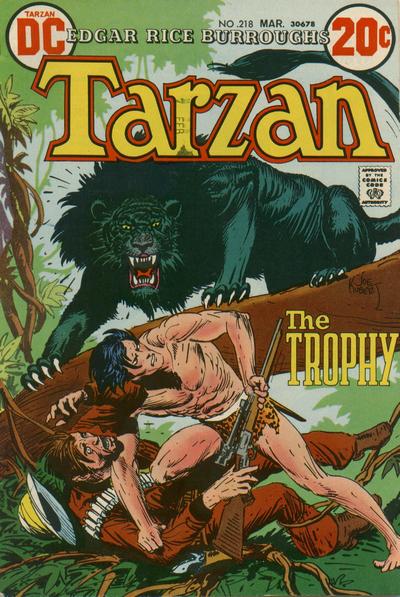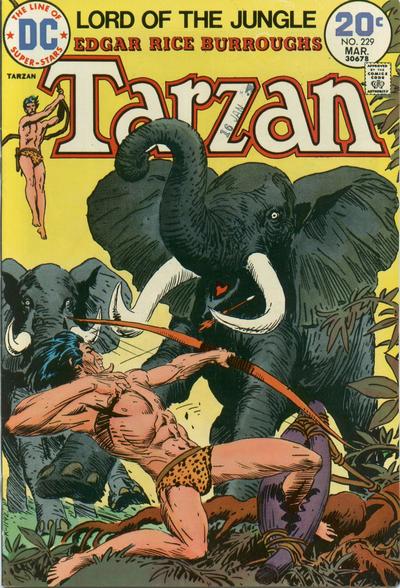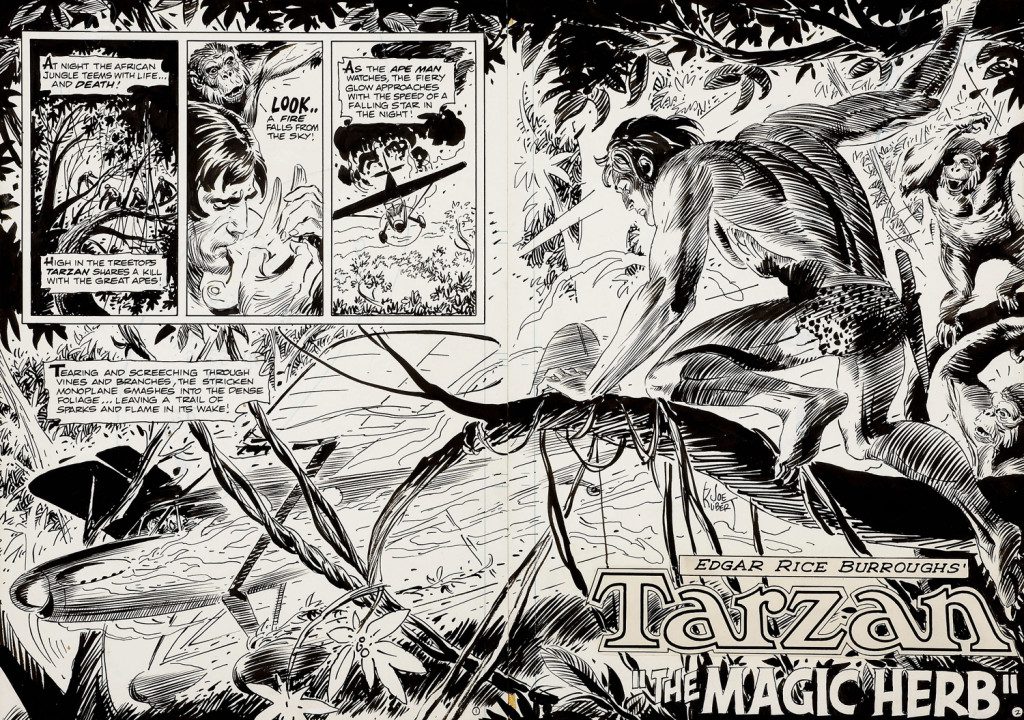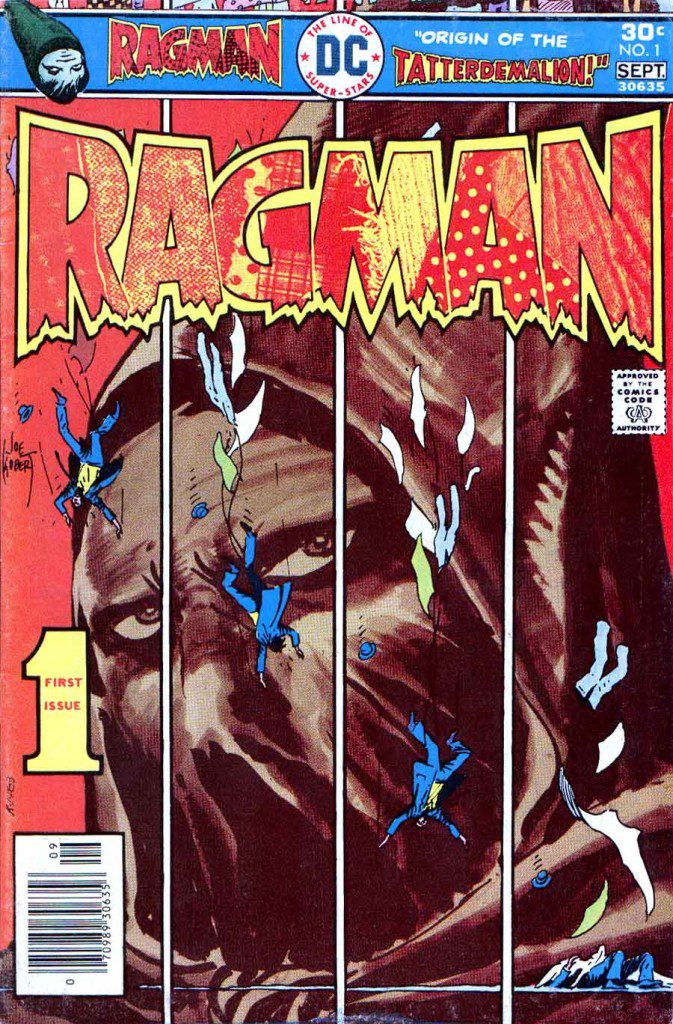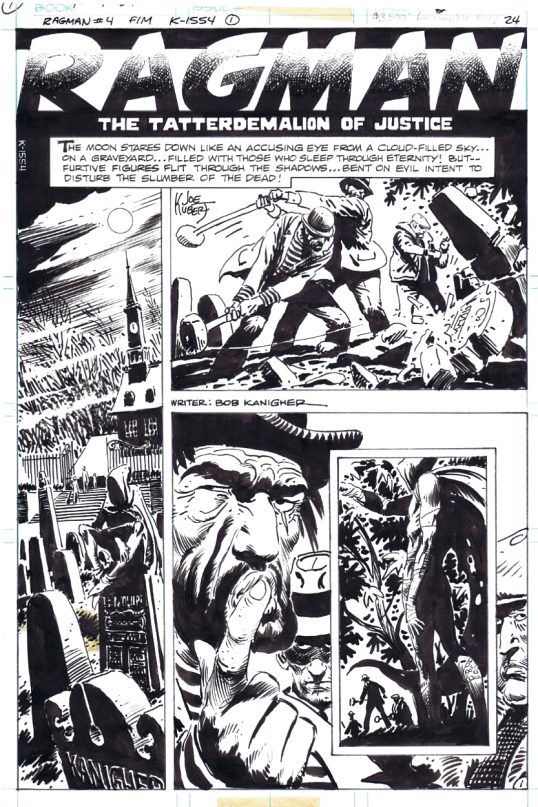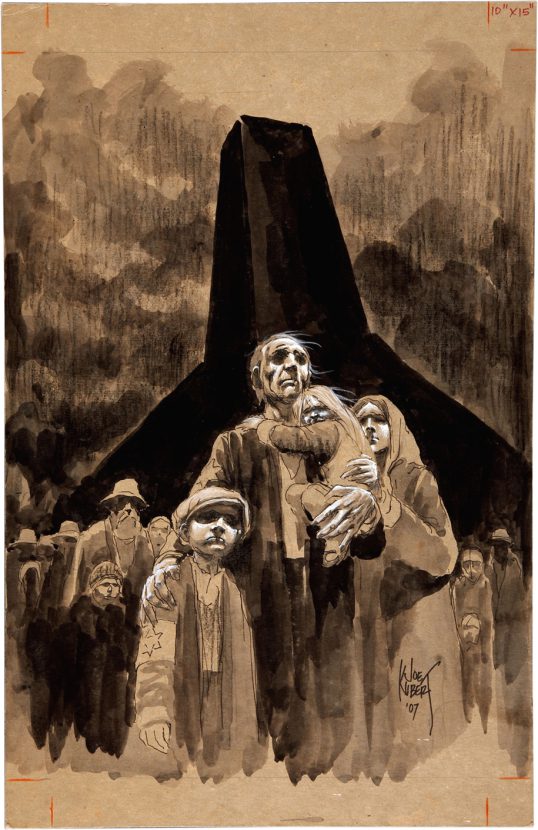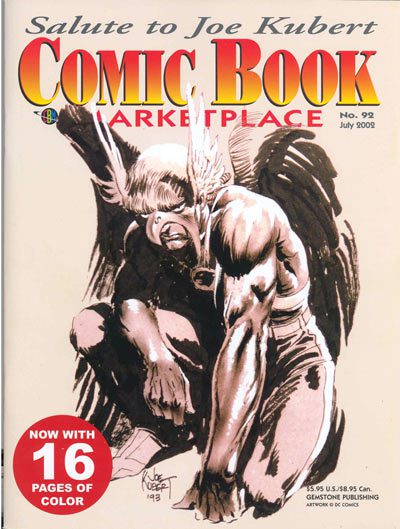The New York Comics & Picture-Story Symposium is a weekly forum for discussing the tradition and future of text/image work. Open to the public, it meets Monday nights 7-9pm EST in New York City. Presentations vary weekly and include everything from historical topics and technical demonstrations to creators presenting their work. Check out upcoming meetings here.
Arlen Schumer gave a visually stunning and informative presentation this past Monday night on the work of legendary comic artist, Joe Kubert.
The evening began with a tech delay that was quickly forgotten once the lights dimmed and Schumer launched into his introduction, which featured loud dramatic music surrounding a perfectly timed slideshow of some of Kubert’s definitive characters. “These are biblical characters!” he narrated in apt bravado.
Our presenter, who wore a Sgt. Rock t-shirt beneath his suit jacket, radiated admiration for Kubert and his work. His VisuaLecture, as he calls it, showcased the crème de la crème of comic art by one of the definitive Kings of Comics, accompanied by a near encyclopedic knowledge of timeline, process, characters, and a myriad of industry anecdotes.
If you didn’t know that Howard Stern is a big comic book fan because his cousin was a main colorist at DC Comics, well, now you do.
But that’s not all.
As a teenager in the 1940s, Kubert was about to unwittingly become an integral part of the silver age of comics. The dominating motifs in comics at the time reflected what was popular in American culture—automobiles, motion, speed. The idea to bring beloved characters and stories from earlier days and present them in a new, modernized way had gained momentum, which was how Kubert began drawing Hawkman and The Flash for DC Comics when he was just a teenager.
Kubert opened up the comic page with space and depth using just pen and ink. He kept up the beauty and expressiveness of his drawings throughout his entire career. He was not shy of experimenting, either. His approach to comic book covers was equal in thought and design to a hardcover bestseller, delivering some of the most preeminent covers in existence today.
Schumer celebrates this career in the “Tribute to Joe Kubert” issue for Comic Book Marketplace. Schumer’s tribute delves into the five key characters he holds as definitive Kubert: Hawkman, Sgt. Rock, Enemy Ace, Tarzan, and Rag Man.
Kubert’s Hawkman captures the essential savageness of the character—delivering on each page an unapologetic and dominating presence. “This is Kubert’s Superman,” said Schumer.
Much of Kubert’s work consisted of war and military-themed content, as most of his career spanned a time when such images and stories were a heavily prevalent subject matter in daily American life. One of Kubert’s most celebrated characters was the war-hero Sgt. Frank Rock from the series “Our Army at War.”
Sgt. Rock showed up in 1959, written and created by Kubert’s long time writing companion, Robert Kanigher. The Sgt. Rock series met surprising success, even through the Vietnam War and lasting until 1988.
What’s interesting about Kubert’s handling of the war motif in this story is the grasp on reality—he portrayed war’s “hell” aspect, rather than a glorification that was favored in entertainment media at the time.
With Kubert’s drawings, the audience wasn’t given a view of the enemy as “other,” but rather as “us.” You felt the opponent’s pain just as much as that of the home team. Schumer explained that Kubert downplayed whether or not his seeming antiwar approach was fully intentional. “Great ideas can seep in through the ether,” Schumer said.
This series in particular showed Kubert’s knack for utilizing the panel space for maximum impact.
Third on Schumer’s list of definitive Kubert characters was Enemy Ace, the German World War I pilot, also written by Kanigher. The series lasted two years, from 1968 to 1970, but showcased Kubert’s artwork at the top of its game.
Everything was done in pure pen & ink, and he couldn’t rely on aid from computer graphics at the time. He pushed space, depth, and color, utilizing the whole page. According to Schumer, Enemy Ace really showcased what could be done in comics with simple, pure primary color, and this was one of the things that solidified Kubert as one of the best comics cover artists of all time, in both quality and quantity.
Kubert had created a character at one point named Tor, a barbarian-type who lived over one million years ago. He’d gone back to Hal Foster’s original pen and ink sequence for inspiration, which led him to create Tor with a very raw pen & ink approach. This would prove to be the foundation for Kubert’s Tarzan.
Shumer showed a selection of Tarzan iterations done by many respected artists over the years. He finally landed on the 1975 cover of the Comic Book Price Guide featuring Kubert’s work—which Schumer esteemed “the definitive Tarzan.” Hogarth’s version was “a little too slick,” Schumer mused, but believed Kubert had managed to capture the beauty and rhythm of the natural jungle in both setting and character. “The perfect melding of comic artist and subject matter…”
In 1976, seemingly out of nowhere, Kubert put out an issue featuring the character of Rag Man, which boasted a cover “you ended up just staring at,” Schumer said.
Rag Man had previously appeared in DC Comics’ “The Dream Killers,” and Kubert had drawn three Batman covers in 1966. Schumer identified this instance of Rag Man, The Tatterdemalion of Justice, as “Kubert doing Batman.”
Rag Man shed light on Kubert’s sensibility for storytelling. The character was a reflection of the current time (i.e. the rag trade in NYC), and in a way, alluded to facets of Kubert’s identity, revealing a sensitivity for his rocky Polish roots and the Jewish struggle.
Always pushing his own limits and exploring, Kubert continued post-Rag Man on that path of more realistic storytelling.
After Rag Man came the graphic novels “Fax from Sarajevo,” which included real stories about the 1991 Bosnian War, and “Abraham Stone,” set in turn-of-the-century NYC.
Then came stories like “Jew Gangster” and “Yossel,” set in the Warsaw ghetto, which featured beautiful pencil drawings on gray paper with white highlights. The images are reminiscent of the under-sketch of a painting—the ground layer to build up from—but still with all the energy and emotion of his earlier comics. Together with the content, the stories seem to reveal the under layer that was Kubert’s early life.
Kubert was born in Poland and escaped just in time in 1938. A case could be made for how these early experiences affected his work, but as Schumer noted, he also did his research. Jobs were hard to come by for anyone, let alone illustrators, so they drew whatever they were offered. Kubert happened to be a dedicated masterful researcher on the job.
Schumer praised this hustle and willingness. “By the time you’ve done the research,” he said, “it’s like osmosis, putting the work to the page.” He compared it to the saying, “If you’re going to hunt the fox, become the fox.” Through his research, Kubert was able to capture a character by entering their mindset.
The breadth of Schumer’s admiration for Kubert’s work was contagious. By the end of the night, his unwavering enthusiasm had spread fluidly to everyone in the room. We could only imagine the time and research that went into amassing such a library of knowledge on not only Kubert’s work, but the history of comic art. The presentation was expertly planned, well-paced, and eventful—when Schumer stopped halfway through to give us a little intermission, no one moved, so he continued. We were drawn in again and again with each new slide—much like a Kubert page—with every fact delivered just-so for maximum impact.
***
Image credits:
1. Comic Book Creator, issue 2 cover, 2013
2. Hawkman & Shadow Thief, Comic Book Resources
3. The Unknown Soldier, Comic Book Resources
4 & 5. Hawkman covers, Comic Book Resources
6. Sgt. Rock cover, “War is War,” Comic Book Resources
7 & 8. Sgt. Rock, via Lost Drawings
9 & 10. Enemy Ace, Comic Book Resources
11. Tor cover, Comic Book Resources
12. inked page from Tor, via Lost Drawings
13 & 14. Tarzan covers, Comic Book Resources
15. Tarzan, “The Magic Herb,” via Lost Drawings
16. Rag Man cover via Comics Bulletin
17. Rag Man page via Lost Drawings
18. untitled image via Lost Drawings
19. Hawkman sketch, Comic Book Marketplace #92, via Scoop
About the author: Delaney Gibbons is a freelance illustrator, designer, and storyteller in New York City. See her latest here and her greatest on twitter.

